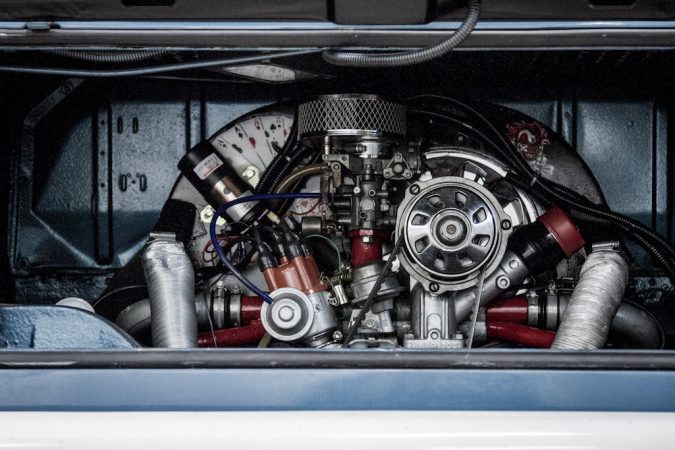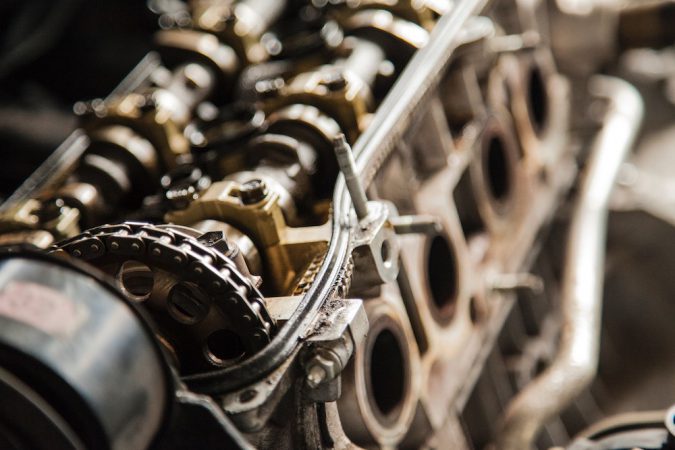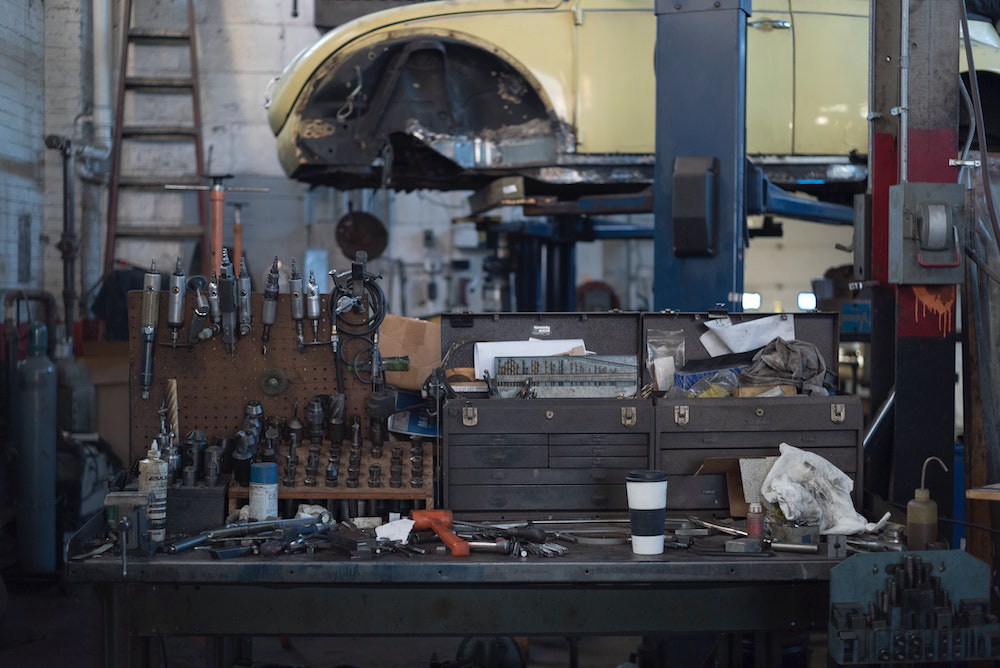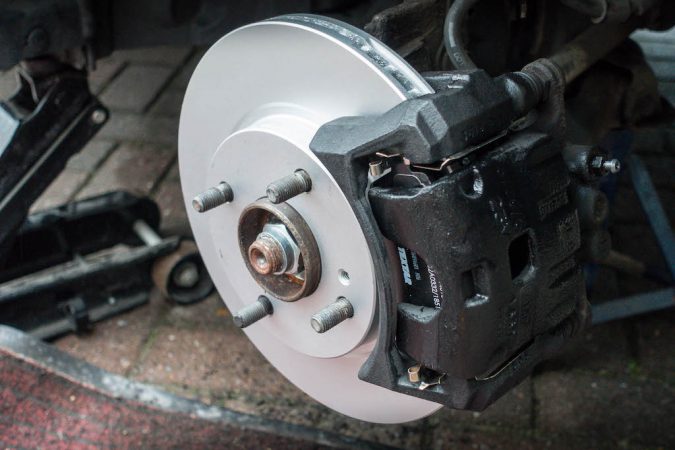Of all the vehicles that have ever graced our streets, only a few remain iconic. This short list includes the Ford Mustang, Land Rover Defender among a few others. But one seat in any of these elite clubs is reserved for the VW Beetle. The quirky little hatchback has a fanbase of its own around the world. But VW Beetle problems are also a widely discussed topic.
Despite the tiny size of the car, the VW Beetle problems were not that tiny. Especially in some model years of the second-generation VW New Beetle, it carried many issues. So, if you are on the hunt for a cheap hatchback but want something unique, how do you not fall into the trap of these troubling examples?
This is where this story comes in. Let us drill down to each of the major VW Beetle problems and ultimately decide what you must look for.
But before we dive into that, let us turn a few history pages backward and see where the VW Beetle came from.
History of VW beetle
The VW Beetle’s journey spans decades. From its inception in 1938 till the day the final Beetle rolled out in 2019, the Bug went through three models. The original Beetle’s life started in 1938 and went on till 2003. This had one of the longest continuous runs for any vehicle in the world.
In 1997, the original VW Beetle inspired a completely new vehicle. The Volkswagen New Beetle. This little round hatch was sold in many countries around the world. The lifespan of the VW New Beetle went on till 2011 when it was replaced with yet another new model.

The final addition to the Beetle range was the new VW Beetle. This modern interpretation of the original Bug was closer to it in terms of design. Now let us look at each of these Beetles in detail.
The Original Beetle (1938 – 2003)
An icon on its own, the VW Beetle has always been celebrated by the motoring fraternity around the world. But despite its legendary stature, the Beetle’s inception is not a very bright story.
The VW Beetle was conceived back in the ‘30’s Nazi Germany to fulfill Adolf Hitler’s wish for a “People’s car”, or “Volkswagen”, as it is called in German. The idea of a car that everyone can afford was floating around for a while then, but it was the Beetle that made it finally happen.
The Beetle’s designs were created by none other than Ferdinand Porsche, the founder of, well, Porsche. The little hatchback had a unique beetle-like shape, a rear-mounted, air-cooled engine, and seating for five. But the idea was never completely original though. There are many disputes regarding the design of the Beetle, the most noted of them came from Tatra, a Czech carmaker. A lot of political foul play followed, and Porsche finalized the design for commercial roll-out.
The Beetle was actually named Kraft-durch-Freude-Wagen (“Strength Through Joy Car“) during the Nazi rule. This name is abbreviated to KdF-Wagen. But after the Second World War and the political turmoil that followed, the KdF-Wagen was then renamed the Volkswagen Type I. But the world was quick to adopt the names Beetle and Bug, but VW was not. They only started using the name Beetle for their marketing in 1967. But no matter which name it came with, the Beetle was bound to be a hit.
The little hatch was offered to the public at a nominal rate of RM990 ($396). This was equal to the price of a motorcycle back then. That was the start of the original VW Beetle, and the rest is history.
Engineering
The most interesting aspect of Beetle’s engineering is its engine. The original Beetle was built with a 985-cc rear-mounted, air-cooled engine. This mill was good enough for 25 hp. Another 704-cc engine was also utilized during its initial production. The Beetle also received a myriad of engines through its lifetime, all of them air-cooled. This simple engineering decision kept the VW Beetle problems low in these models. And when the VW Beetle problems do pop up, it was easier to repair.
Later models received larger engines and were named 1200,1300 and 1500, based on their cubic capacity. The Beetle also spawned several variants, including a Cabriolet. Other VW models were also inspired by the Beetle, including the iconic VW Bus.
Reception
It is no secret that the Beetle is one of the longest-running models in the world that were built on the same platform. The Beetle was received well by Germany first, and then the whole world.
Through its iconic run of about 65 years, VW sold 21,529,464 Beetles around the world. People loved its unique design and simplistic engineering. It was cheap to own and easy to repair. This generation had very few VW Beetle problems. In many countries, the Beetle was adored as taxies due to these very qualities, until their numbers dwindled in the very recent past due to more stringent pollution norms.
The curtains finally fell on the Beetle in 2003, due to the decline in demand. The annual production of the Beetle fell from more than a million in its prime to 30,000. VW then decided to finally call it a day and pulled the plug on the Type I Beetle. The final example rolled out of a factory in Puebla, Mexico on 30 July 2003. This Beetle is named El Rey, translated to The King in English. You can see this icon in VW’s Museum in Wolfsburg, Germany.
The VW New Beetle (1997-2011)
Fueled by the immense success of the Type I VW Beetle, VW decided to give the formula a modern spin. This was achieved by rolling out a modern interpretation of the superstar. The VW New Beetle was launched in 1997 when the Type I Beetle was still on sale.
Though the design of the VW New Beetle was heavily inspired by the original, it was a completely new vehicle. The platform of the new Beetle was borrowed by another VW success story, the Golf. The other major change was in the engine bay. Unlike the revered rear-mounted engine of the first Beetle, the new Beetle had its engine in the front. The air-cooling gave way to modern liquid-cooling, enabling better performance and efficiency.
The utilization of a modern platform meant that the new Beetle could be fitted with several engines. As a result, an army of petrol and diesel engines found their way into the engine bay of the VW New Beetle. Well, these contributed to many of the VW Beetle problems in our upcoming list.
The New Beetle was modern of course, but it could not recapture the magic of the original. It was not a sales blockbuster either. VW replaced it with an all-new Beetle in 2011.
If you are on the hunt for a used VW Beetle, you can find more from this generation. So, when we talk about VW Beetle problems, this is the generation we will focus on the most. You can find some original Beetles as well, but you will have to be a vintage car nut to maintain it.
The Third-Gen VW Beetle (2011-2019)
When VW decided to phase out the New Beetle in 2011, they kept the name running with another model. The latest VW Beetle came with a design that evolved from the first two cars. But this time, the silhouette was not completely rounded off, like the New Beetle. Instead, it followed the lines of the original Beetle.
The latest addition to the Beetle family used the then-modern A5 platform from VW. This platform was already the base for other VW cars, including the Jetta, Golf, and more. With the latest underpinnings, this iteration of the Beetle formula was the best to drive, and easier to live with.
Just like the New Beetle, this generation also had a front-engine, front-wheel-drive layout that cleared out more room inside. There were a bunch of modern engines on offer as well.
If reading through all this text did not give you a visual idea, this video will get you up to speed.
The third generation of the Beetle was the final one ever. VW pulled a plug on the iconic brand in 2019, when they rolled out the final third-gen VW Beetle. In the used car market, you can find some Beetles from this final generation as well.
In our list of VW Beetle problems, a few issues are common for both the New Beetle and the third-gen Beetle. Now, as we are familiar with the Beetle range and timelines, let us jump into the VW Beetle problems.
VW Beetle Problems: What are they?
VW Beetle is not exactly what you would call a reliable machine. Especially in some specific model years of its life, the VW Beetle problems were more than ever. Model years including 2000, 2004, and 2008 were especially bad. Despite its underpinnings tracing back to the relatively more reliable Golf, it was a surprise that VW Beetle problems existed.
But they did. So let us look at a comprehensive list of VW Beetle problems to ultimately decide if this little curvy bug is a fit for your garage.
Defective Timing Chains
The VW’s EA888 petrol engines were known for the timing chain and tensioner issues, and this was a major VW Beetle problem. The timing chain usually comes loose, and this can damage the engine.
The primary function of the timing chain is to connect the crankshaft to the camshaft. These line up the timing of the opening & closing of valves to the crankshaft rotation. This sync is very important to the efficient functioning of the engine. As its name suggests, this very chain keeps the crucial timing in check.

The timing chains are usually durable. Therefore, they replaced timing belts in most larger engines. But a faulty tensioner can flip the script for the worst. The tensioner plays an important role in maintaining the tension of the chain so that it functions optimally. It keeps the chain wound tightly over the pulleys and gears, thereby maintaining its tension.
A failed tensioner can loosen the chain and create catastrophic issues. Volkswagen’s EA888 engines are known to experience timing chain failures even with just 20,000 miles on the odometer. The most likely cause for this is a failed tensioner. If this component fails to maintain the tension on the chain, the timing of the entire engine can go for a toss.
Loose Timing Chain – Symptoms
The most common symptoms of a loose timing chain include the following
Rattle During Engine Operation – If you have a loose component inside your quickly rotating engine, you are bound to hear some rattling. If the timing chain has gone loose, you will not miss it. Your engine will emit unpleasant vibrating noises while idling and starting.
Check Engine Light – The crankshaft and camshaft sensors are programmed to pick up an unusual engine operation and alert us. In this case, they may detect the impending doom and alert the driver through the engine check light.
Trouble While Starting – A car engine depends on perfect combustion for its operation. And this happens thousands of times in a minute. So, an imperfection in this process can fling its balance out of the window. So, a loose timing chain gives the VW Beetle a problem by making it hard to start. But trust me, it is better you do not start it at all.
Metal Shavings In Oil – If you are changing the oil of your beloved bug and you spot metal shavings in it, well, you have the VW Beetle problem. Improper lubrication due to delayed oil changes can wear your chain out.
If you think you have a loose timing chain, you should not wait. These VW engines are interference engines, which means that when the chain fails, your pistons will crash into the valves. Not a happy scenario and it can get even gloomier when you receive the colossal repair bill.
If you think your timing belt is going loose, get your car towed to a nearby garage and get it checked. VW Beetle owners are not alone in this mess though. Golf, Eos, Touareg, Tiguan, Passat, Jetta, and a few other models are also troubled with this issue.
Vehicle Brakes Automatically
VW vehicles come with a Front Assist Technology that detects obstacles ahead and brakes the car automatically. This collision avoidance technology can end up being another VW Beetle problem. Owners report that some VW Beetles are found to brake automatically even when there are no obstacles ahead.
In this case, this collision-avoidance tech can increase the chance of getting rear-ended by a dumb tailgater. This system is also found to not work, even when the sensor is clean, and the weather is favorable. Rubbing more salt onto the wound are insurance companies. They will not cover accidents that are caused due to technological error.
Dangerous Takata Airbag
You are not alone on this boat. The Takata Corp. made airbags that triggered the largest ever vehicle recall. With more than 100 million vehicles recalled worldwide, and still counting, this is also one of the VW Beetle problems.
The inflators in these airbags can become unstable over time, especially in hot conditions. This can trigger a rupture of the airbag without any impact. An explosion of this sort can send metal bits into the cabin. Shrapnel of this kind can end up taking lives, and sadly it has. Takata’s faulty airbags are found to be responsible for 27 deaths worldwide.
These airbags were also fitted in the VW Beetle, problems for their owners. So, before you buy a new VW Beetle, make sure that the airbags are not a part of the recalled units. If they are, ensure that they are already replaced.
Window Regulators And Window Clip Defect
One of the most common VW Beetle problems is related to the windows of the vehicle. Many owners have reported that the windows of their Beetle, and other VW models, falling into the door. In these vehicles, the clips that help the windowpane in place are made partly with plastic. This plastic part can crack and break due to constant exposure to changing temperatures and moisture, letting the window fall into the door.
The window regulators in these vehicles are also known to clump up the regulator cables inside them. This will need you to take apart the regulator and replace it with a new regulator cable. The replacement costs will depend on the model year of the vehicle as VW released several repair kits over time. They also had extended the warranty of this part in many of their cars to 7 years. So, when you are looking for a Beetle, make sure that the window regulators are in proper condition. Ask for extended warranty details as well.
Brake Light Switches
Many VWs have had issues with their faulty brake light switches. This seemingly little part can end up messing with the vehicle in more ways than you can imagine. If you have this VW Beetle problem, your brake lights may not light up when you brake. In some other vehicles, it may not shut off, some vehicles may not come out of park, and some others will not have cruise control because of this failure.
Multiple recalls have happened due to this brake light switch issue. VW has also revised the brake light switch design several times to alleviate the possibility of a malfunction. So, if you buy Beetles from the later model years, you may not have to dally with one of the VW Beetle problems.
Interior Trim problems
This issue is mostly with 2000 model year VW Beetles. The plastic trim on the doors and dashboard peel off over time. Other plastic surfaces can bubble up or break off easily. Though not as critical as the other VW Beetle problems it is good to keep in mind.
Diesel Gate Scandal
What is a VW Beetle problems list, or any VW problems list for that matter, without Dieselgate mentioned in it? The notorious “defeat devices” that Volkswagen used to manipulate the emissions led the company into a complete fix. After an NHTSA probe into the matter, VW admitted that they had used these illegal devices on 11 million vehicles worldwide.
This device in the Engine Control Module (ECM) monitored vehicle speed, steering wheel position, barometric pressure, and more. This helped it determine if the vehicle is under normal road use or if it is being tested for emissions output. If it detects an emission test, it activates the emission control devices to reduce the NOx output. After the test, it switches back to regular mode, which pumps out more pollutants.
Once VW’s sinister move was out in public, it opened a floodgate of lawsuits. VW ended up losing billions of dollars in fines and reparations. They also had to recall huge numbers of cars in most markets. In some markets like India, they stopped selling diesel cars altogether when the new pollution norms came around.
So, if the Beetle of your dreams comes with a diesel, it may have been a part of this recall. The vehicles are good, make no mistake, but the environmental impact is higher than a new diesel vehicle. But if you are buying a very old diesel car, you end up buying a more polluting vehicle anyway. VW diesel cars are now available for cracking deals, along with a very long warranty that VW issued post-Dieselgate.
VW Beetle Years to Avoid and Safe to Buy Used
- The VW Beetle is a classic two-door car with room for five passengers that has been around for close to seventy-five years and continues to draw admirers today.
- To find an ideal VW Beetle, it’s critical to understand the VW Beetle years to avoid as some years require expensive fixes that can cause trouble while driving.
- The biggest trouble spots for the VW Beetle are the transmission and the engine, which may require an intense replacement and cause expenses for the owner.
- To help find the best VW Beetle, carcomplaints.com recommends staying away from the 2000, 2001, 2003, 2004, 2006, 2007, 2009, 2012, and 2013 models.
- The best years for the VW Beetle, according to carcomplaints.com, are 1962, 1969, 1972, 1998, 1999, 2002, 2005, 2008, 2010, 2011, 2014, 2015, 2016, 2017, 2018, 2019, and 2020 models.
- Newer VW Beetle models have done better than the older ones, so it’s best to get a newer used VW Beetle for a safer driving experience.
- The 2014 VW Beetle had severe paint and body troubles, while the 2008 VW Beetle had issues with the lights.
- The worst fault in the VW Beetle is with the transmission, and this issue appeared in the 2004 and 2003 models the most.
- According to repairpal.com, the VW Beetle has a reliability rating of ⅘, which puts it above similar competitors.
- Common VW Beetle problems include engine failure, faulty power windows, and faulty power locks.
VW Beetle Problems – Winding Up
The VW Beetle is an icon, and many aspire to buy it. The original VW Bug is now a vintage item, meant for avid collectors. But if you are looking for a family car with modern mechanicals yet with a dash of retro charm thrown in, the Beetle is your best bet. The VW Beetle problems do exist in several shapes and forms, but it is not the most unreliable vehicle. With some proper prep and a keen eye for detail, you can end up buying a reliable, modern incarnation of a retro superstar.


